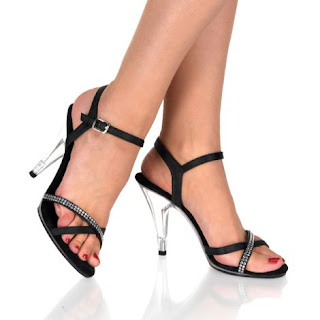Sandal
This article is about the type of footwear. For other uses,
see Sandal (disambiguation).
"Sandals" redirects here. For the Caribbean luxury resorts
operator, see Sandals
Resorts.
Sandals are an open type of outdoor footwear, consisting of a sole held to the wearer's foot
by straps passing over the instep and, sometimes, around the ankle. While the distinction between sandals and other
types of footwear can sometimes be blurry (as in the case of huaraches—the woven
leather footwear seen in Mexico—and peep-toe pumps), the common understanding is
that a sandal leaves most of the upper part of the foot exposed, particularly the toes. People may choose to wear sandals for several
reasons, among them economy (sandals tend to require less material than shoes
and are usually easier to construct), comfort in warm weather, and as a fashion choice.Usually, people wear sandals in warmer climates or during warmer parts of the year in order to keep their feet cool and dry. The risk of developing athlete's foot is lower than with enclosed shoes, and the wearing of sandals may be part of the treatment regimen for such an infection.
History
The oldest known sandals (and the oldest known footwear of any type) were discovered in Fort Rock Cave in the U.S. state of Oregon; radiocarbon dating of the sagebrush bark from which they were woven indicates an age of at least 10,000 years.The word sandal derives from the Greek word sandalon. The ancient Greeks distinguished between baxeae (sing. baxea), a sandal made of willow leaves, twigs, or fibres worn by comic actors and philosophers; and the cothurnus, a boot sandal that rose above the middle of the leg, worn principally by tragic actors, horsemen, hunters, and by men of rank and authority. The sole of the latter was sometimes made much thcker than usual by the insertion of slices of cork, so as to add to the stature of the wearer.
The ancient Egyptians wore sandals made of palm-leaves and papyrus. They are sometimes observable on the feet of Egyptian statues. According to Herodotus, sandals of papyrus were a part of the required and characteristic dress of the Egyptian priests.






















No comments:
Post a Comment